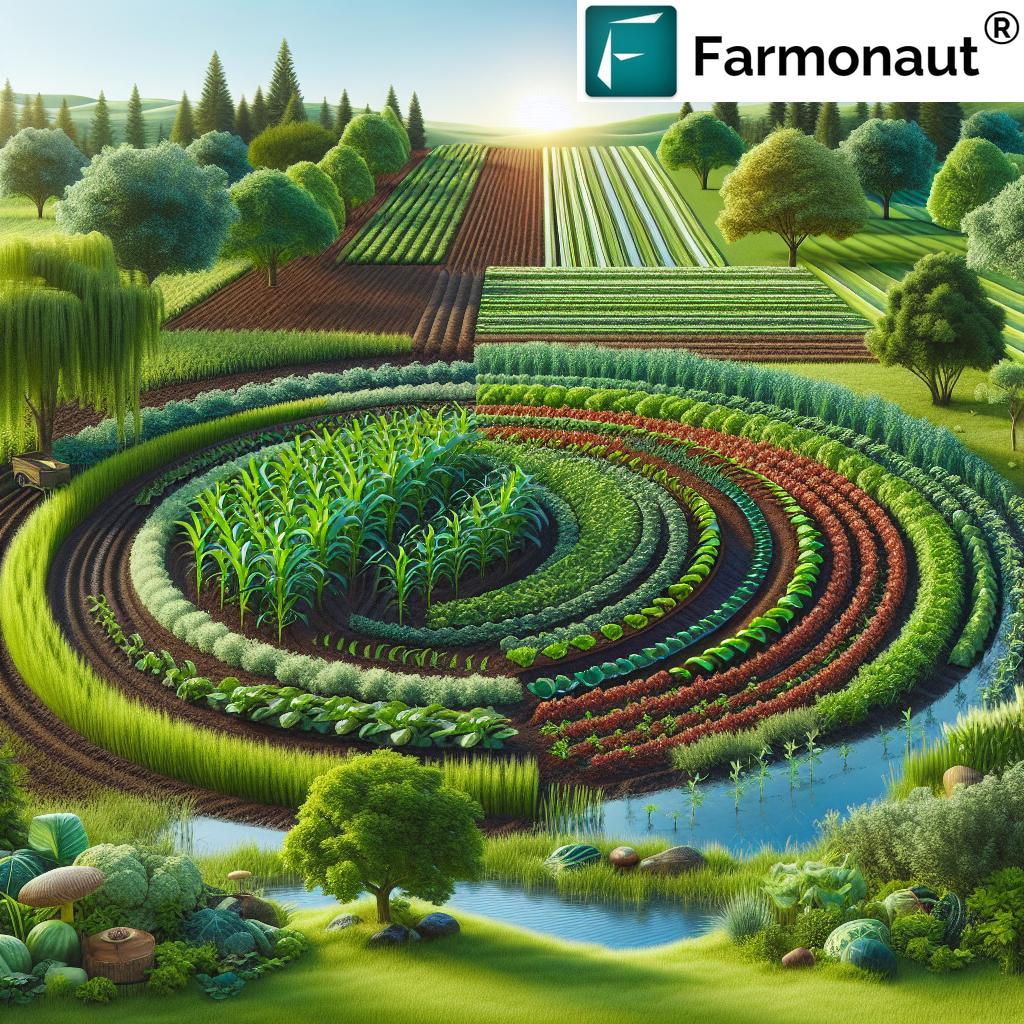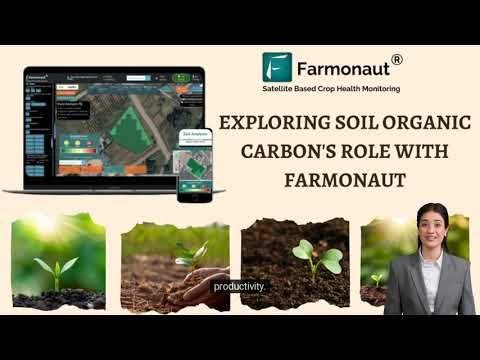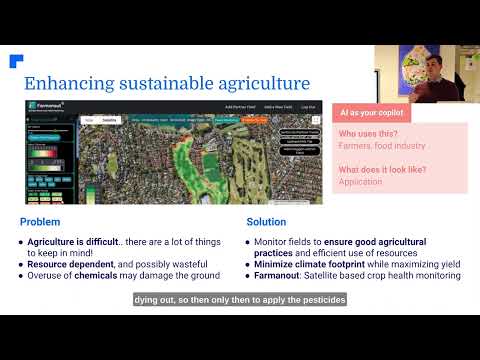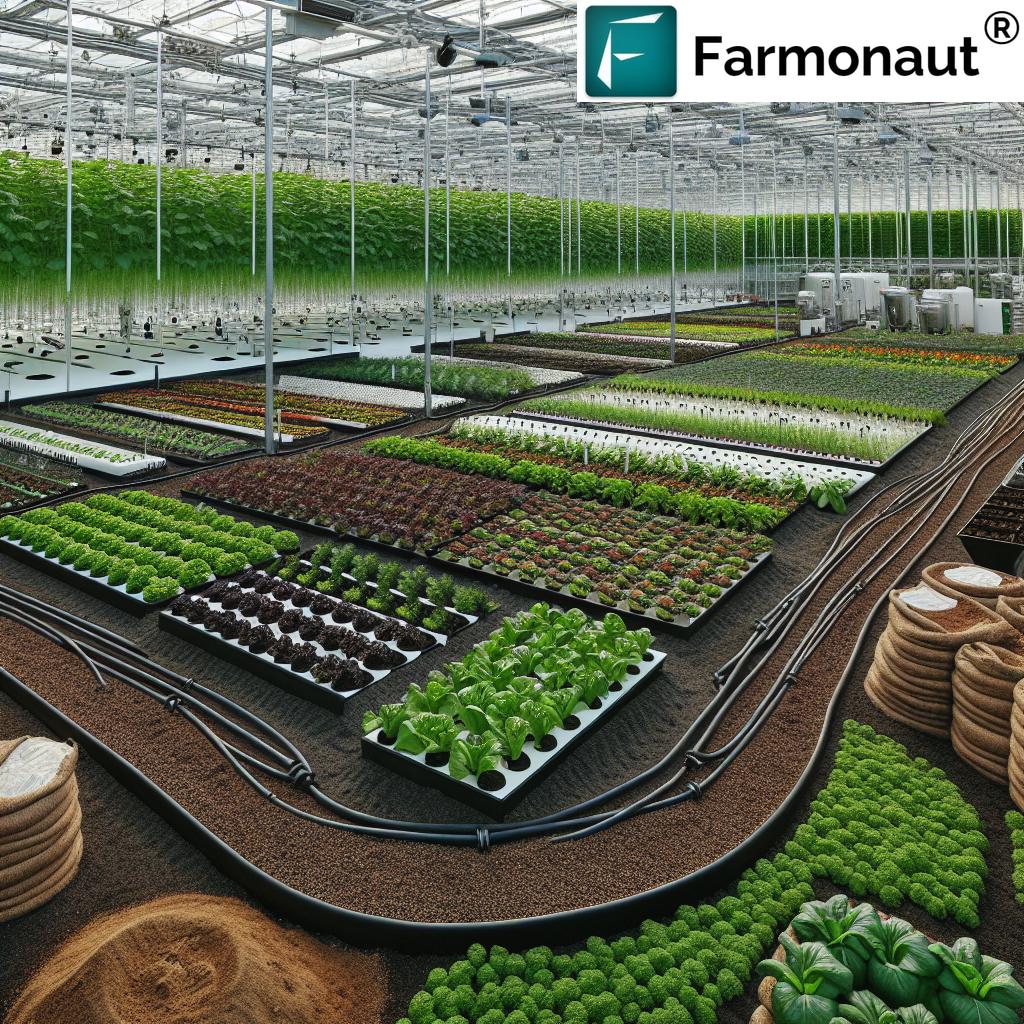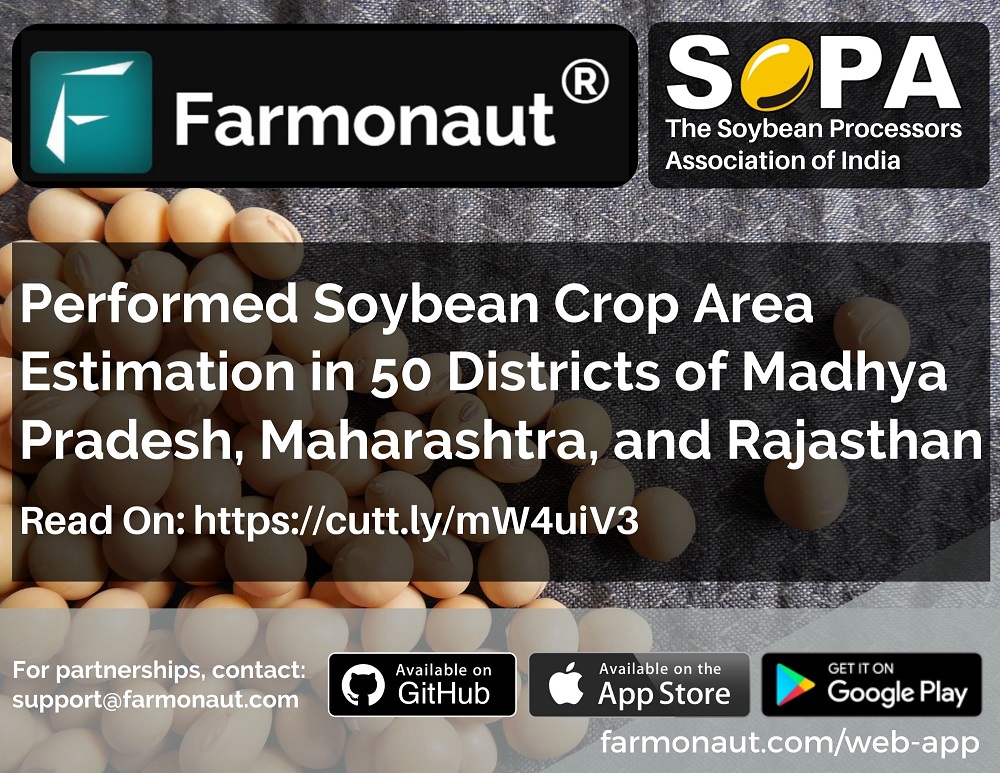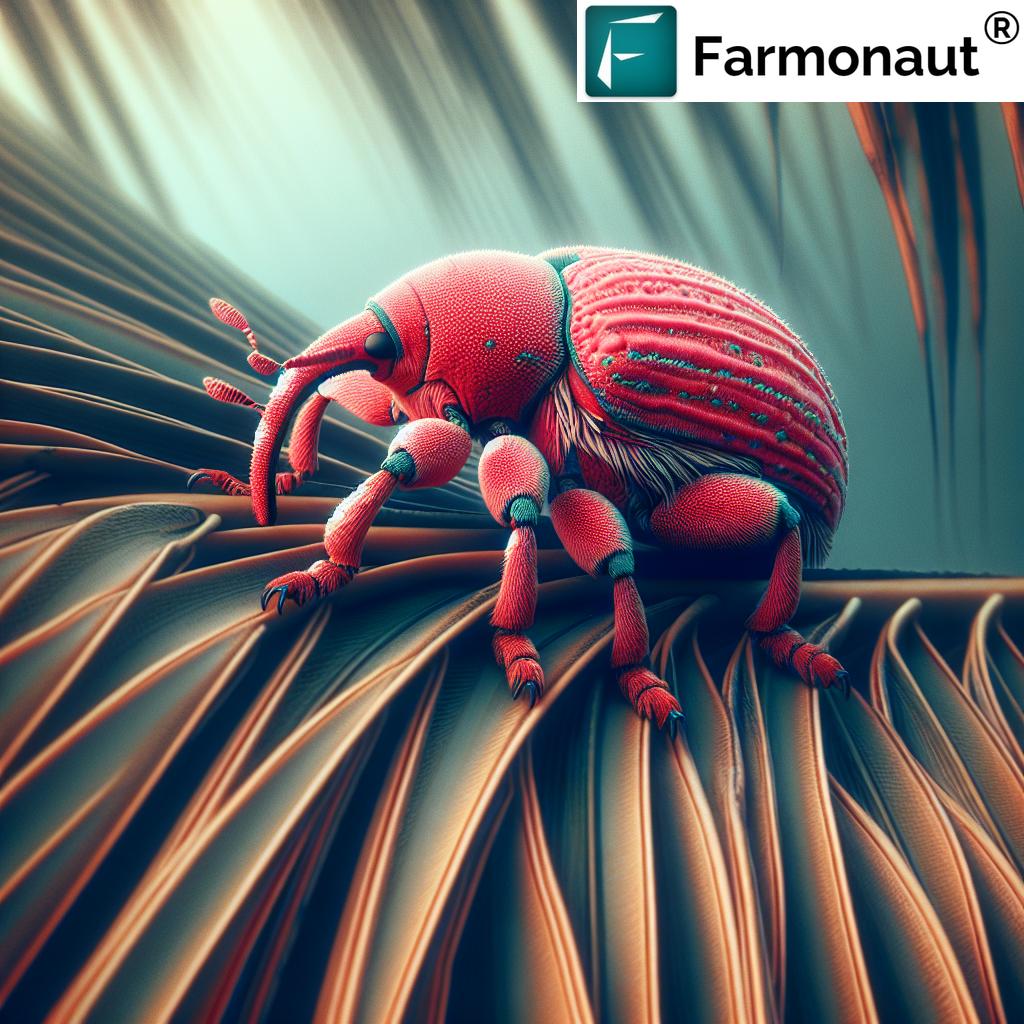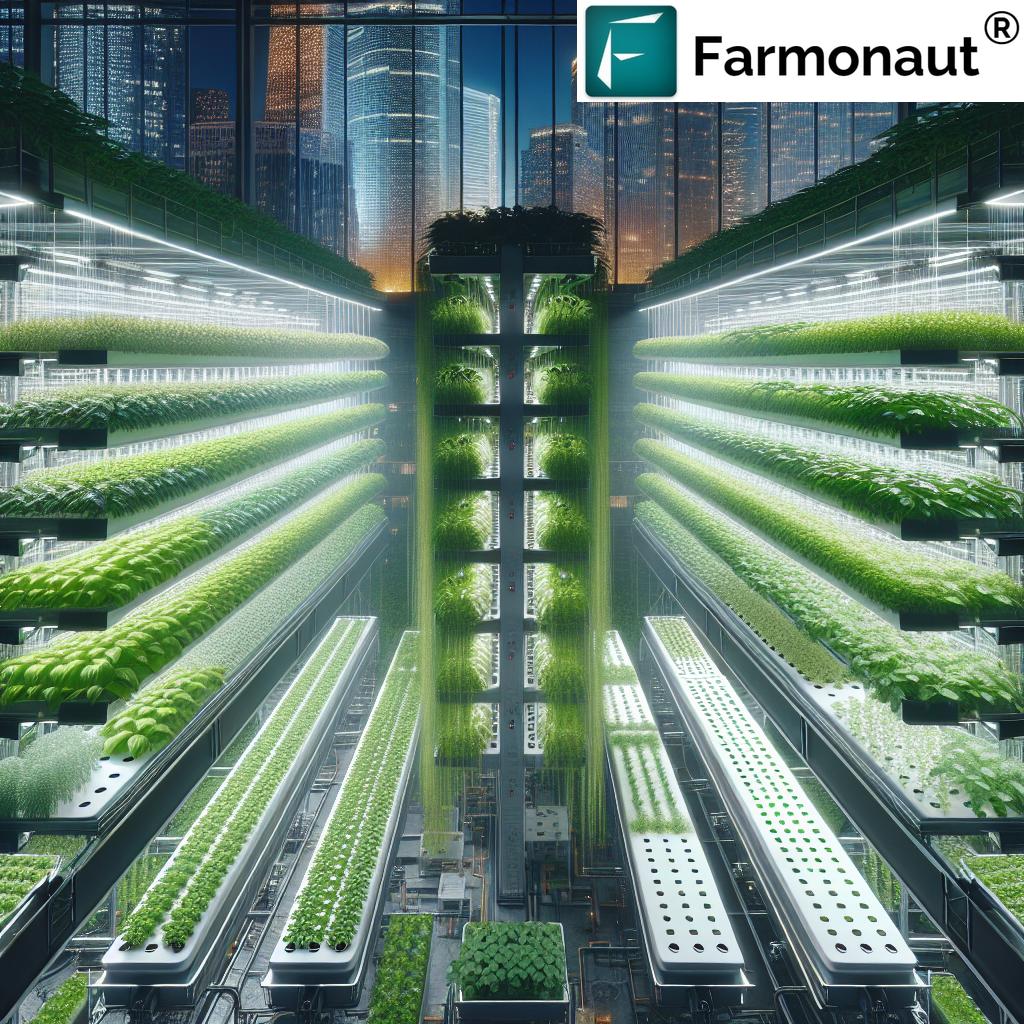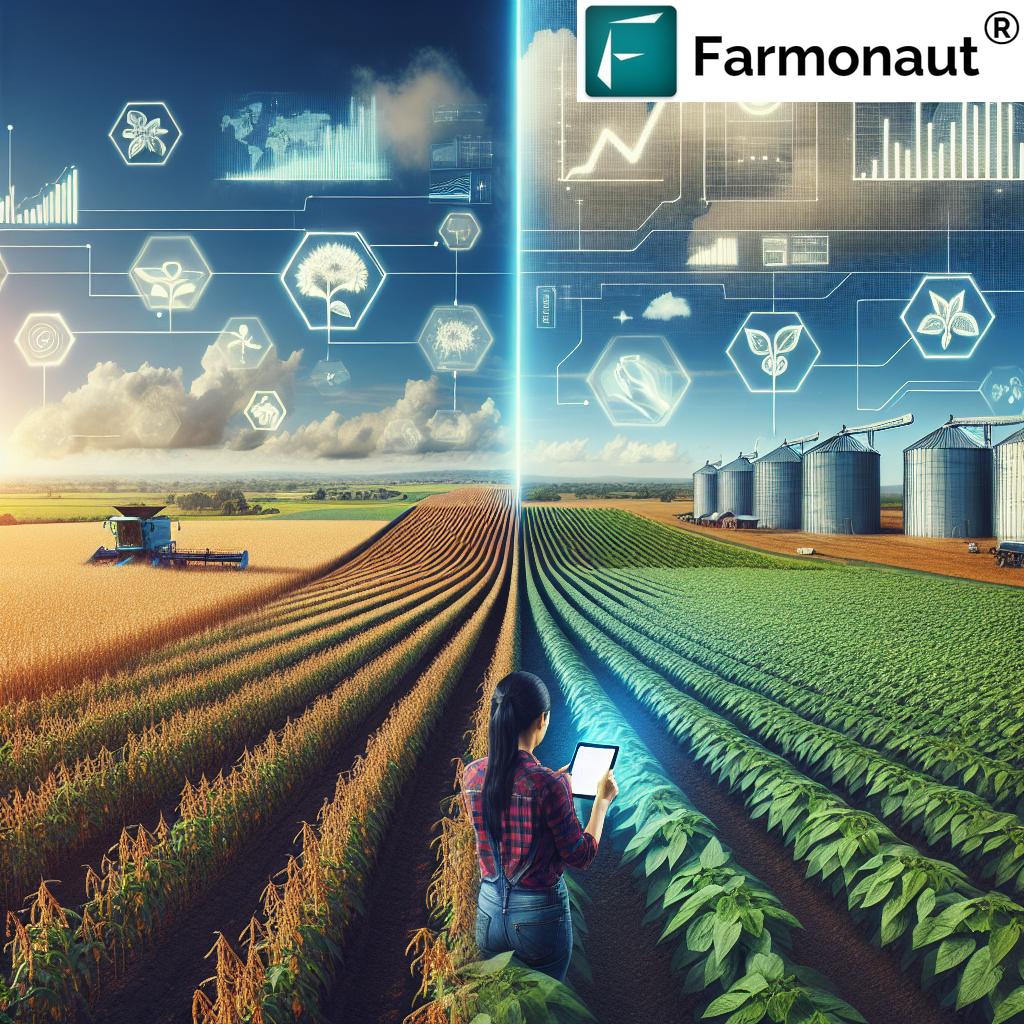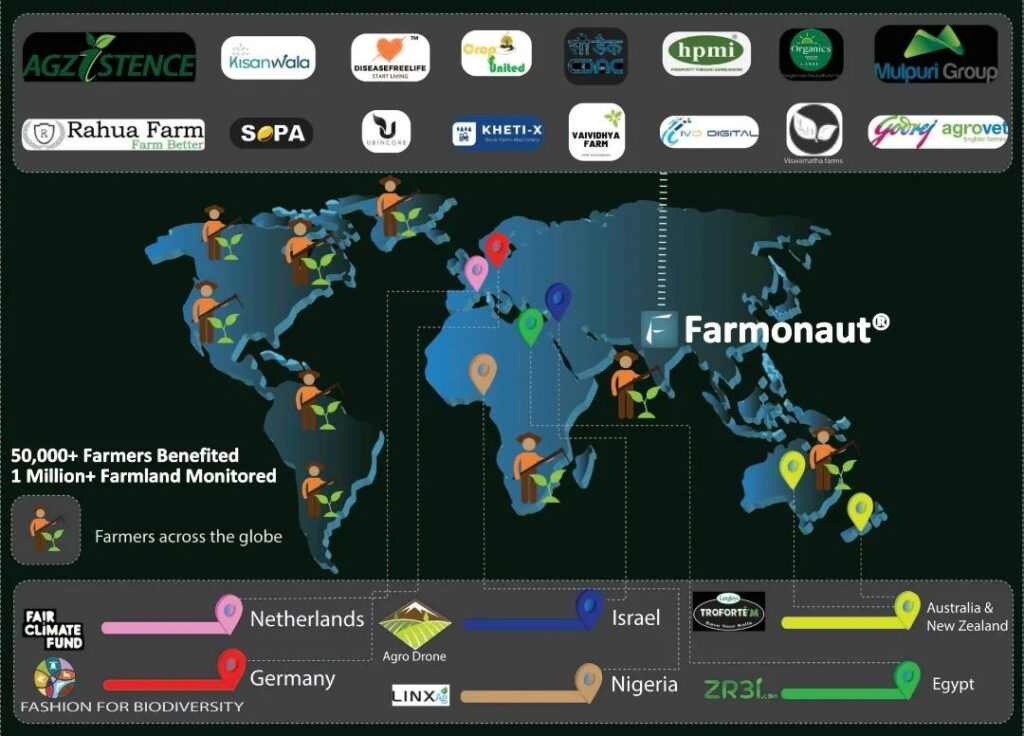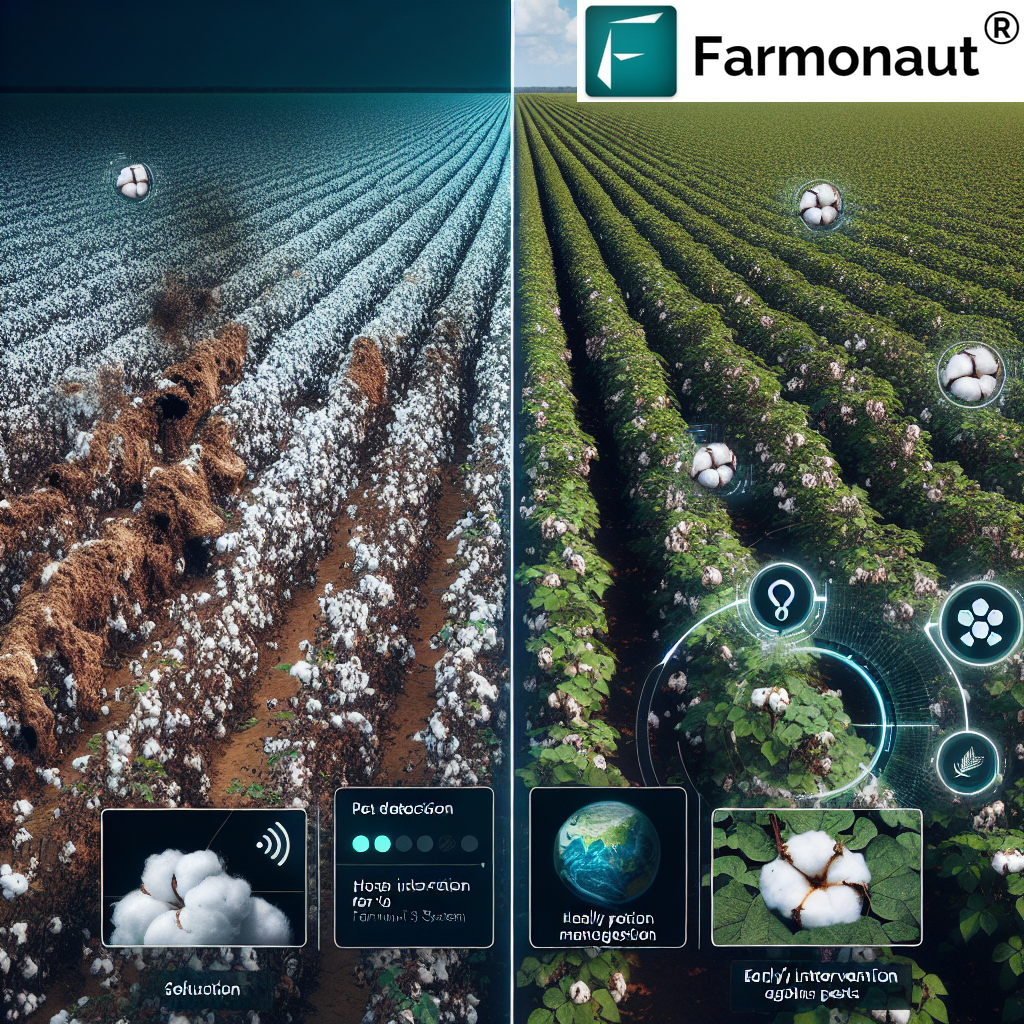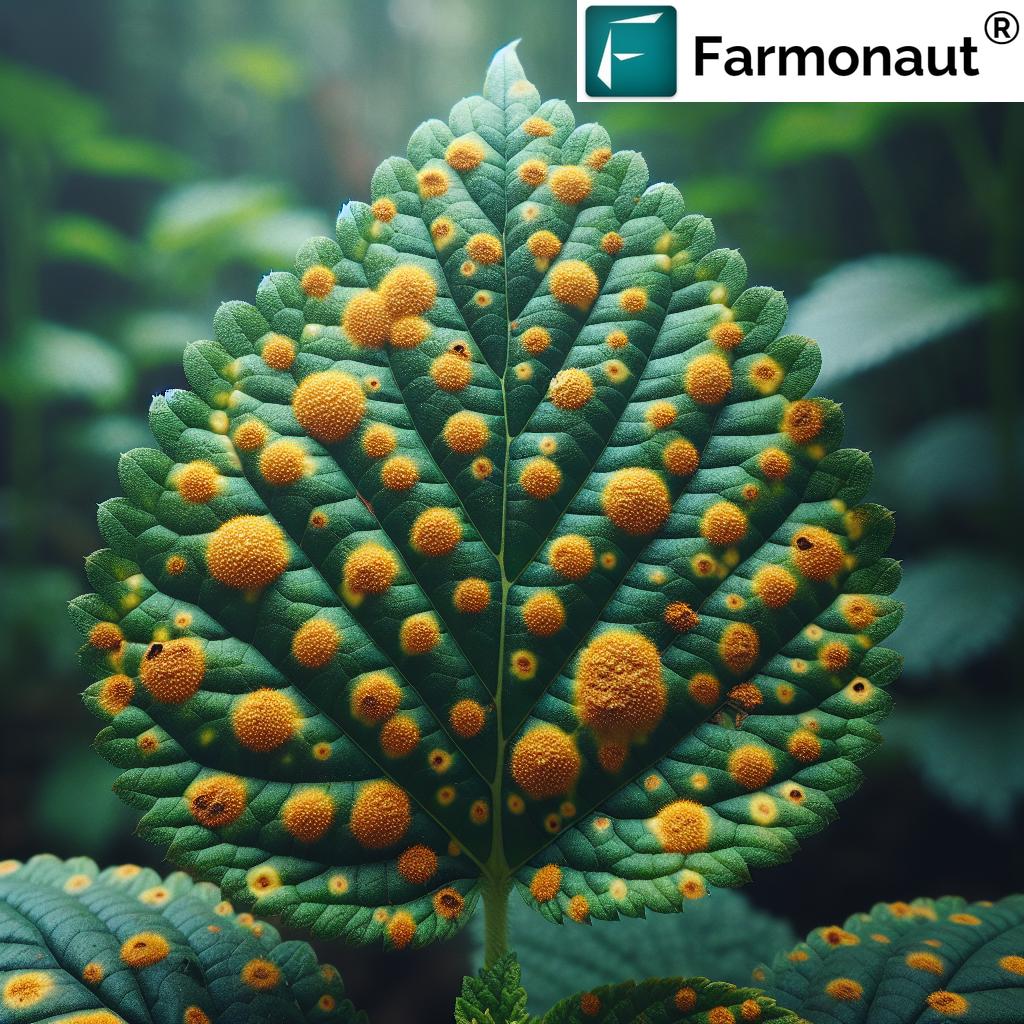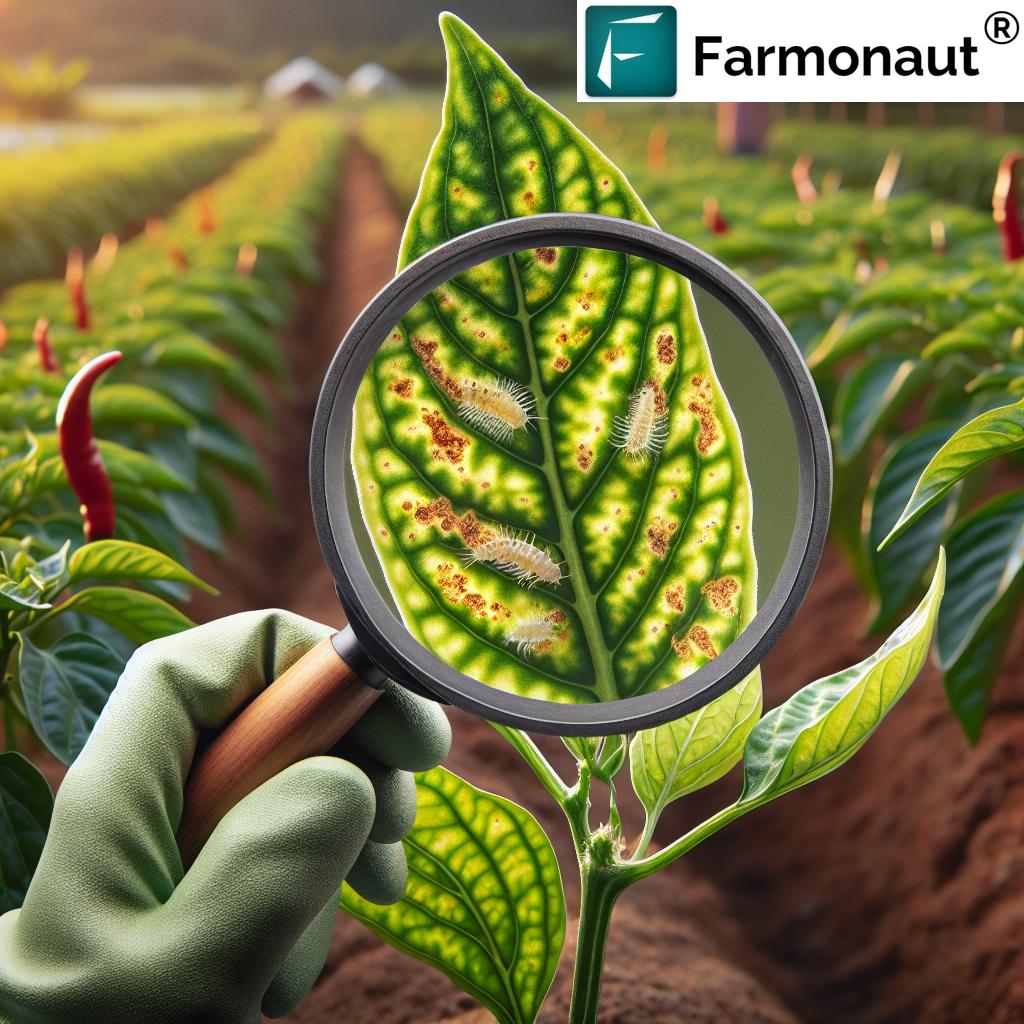Sustainable Farming Techniques: Boost Yields with 15 Hacks
Table of Contents
“Adopting cover crops can increase soil organic matter by up to 21% in just five years.”
Introduction
As the world grapples with climate change, population growth, and dwindling natural resources, the pressing need to transform our agricultural systems has never been clearer. Sustainable farming techniques are essential for ensuring long-term agricultural productivity while preserving vital environmental health. These forward-thinking methods strive to meet current food demands without jeopardizing the ability of future generations to feed themselves.
By integrating ecological principles into our farming practices, we can strengthen the resilience of fields, promote biodiversity, enhance soil fertility, and optimize resource use efficiency. In doing so, we help create a world where both farmers and the environment thrive – now and far into the future.
Why Sustainable Farming Techniques Matter
Sustainable agriculture takes a holistic approach, factoring in environmental impact, resource conservation, climate resilience, and farm profitability. By adopting these techniques and practices, we not only reduce chemical inputs and fossil fuel use but also enhance soil health, boost yields, and diversify farm income. Ultimately, these methods ensure the long-term sustainability of our food systems.
Let’s explore the top 15 sustainable farming techniques—from conservation tillage and cover cropping to precision agriculture technology and agroforestry systems—that can boost yields, restore soil fertility, and preserve our precious water and biodiversity.
Sustainable Farming Techniques: Top 15 Hacks to Boost Yields
1. Conservation Tillage: Healthy Soil, Less Disturbance
Conservation tillage—including no-till and reduced-till practices—minimizes soil disturbance during planting. By leaving crop residues on the field surface, we enhance organic matter levels, boost water retention, and conserve soil structure. This method not only reduces erosion but also increases biodiversity in the soil ecosystem.
- Benefits: Improved soil fertility, reduced erosion, less labor and energy use, higher yields over time.
- Compared to conventional tillage, no-till farming saves 30–40% in time and labor (FAO source).
- Promotes: Sustainability for agriculture by minimizing disturbance and preserving natural systems.
Discover Farmonaut’s Carbon Footprinting, which helps track your farm’s environmental impact and supports your move towards more sustainable tillage and resource-efficient practices for a greener future.
2. Cover Cropping Benefits: Nature’s Green Blanket
Cover cropping is the art of planting specific crops like legumes, rye, or clover during off-seasons. This approach protects soil from erosion, suppresses weeds, and replenishes soil nutrients. Cover crops improve soil structure by increasing organic matter and stimulate microbial activity, fostering a healthier ecosystem.
- Reduces: Need for synthetic fertilizers and pesticides.
- Increases: Biodiversity by providing habitats for beneficial insects and soil organisms.
- Contributes to: Long-term sustainability and resilient cropping systems.
“Adopting cover crops can increase soil organic matter by up to 21% in just five years.”
For insight into soil organic matter and cover cropping benefits, watch this detailed video:
3. Crop Rotation Methods: Disrupting Disease and Pests
Crop rotation is the practice of growing different crops sequentially in the same field over seasons. By alternating crops such as nitrogen-fixing legumes with cereals, we naturally restore soil fertility and balance nutrients. This approach interrupts cycles of pests and diseases while reducing the dependency on chemical fertilizers and pesticides.
- Improves: Soil structure and health, prevents nutrient depletion.
- Encourages: Biodiversity and promotes resilient farming systems.
- Contributes to: Enhanced resource efficiency and sustainable agriculture.
Farmonaut’s satellite-based monitoring helps track crop rotation effectiveness by analyzing field vegetation indices, soil moisture, and historic crop data—delivering actionable insights for every farm.
Try the Large Scale Farm Management solution to monitor and optimize your crop rotation plans seamlessly.
4. Agroforestry Systems: Trees as Allies in Farming
Agroforestry involves integrating trees and shrubs into agricultural systems, providing multiple benefits: enhanced carbon sequestration, soil stabilization, improved soil moisture retention, and increased biodiversity. Tree canopies protect crops from extreme temperatures and winds, while roots help stabilize soil structure and minimize erosion.
- Creates: Habitats for wildlife and beneficial insects.
- Diversifies: Farm income through products such as fruits, nuts, and timber.
- Promotes: Holistic sustainability by combining ecological and economic gains.
Explore Farmonaut’s Crop, Plantation, and Forest Advisory Tools for detailed recommendations on integrating trees and optimizing your on-farm agroforestry plans.
5. Integrated Pest Management (IPM): Eco-Friendly Pest Control
Integrated Pest Management (IPM) combines biological, cultural, physical, and judicious chemical controls to manage pests sustainably. By fostering natural predators, using resistant varieties, and rotating crops, we tackle infestations while minimizing pesticide use and protecting beneficial organisms.
- Reduces: Reliance on harmful chemical pesticides.
- Promotes: Biodiversity and ecosystem health.
- Supports: Long-term food safety and sustainability.
Through real-time pest alerts, Farmonaut’s Jeevn AI Advisory System helps farms implement timely and effective IPM strategies—enhancing yield while conserving biodiversity.
Want robust traceability throughout your eco-friendly farming journey? Farmonaut’s Traceability Solution secures every product from field to fork via blockchain, ensuring transparency and consumer trust.
6. Organic Farming Practices: Harnessing Natural Inputs
Organic farming shuns synthetic fertilizers and pesticides in favor of natural soil amendments, compost, green manure, and biological pest control. These practices stimulate soil microbial activity, maintain long-term fertility, and deliver healthier food products.
- Enhances: Soil health through increased organic matter.
- Promotes: Biodiversity in farm ecosystems.
- Reduces: Environmental impact of agriculture.
Organic fields often see greater pest resistance, richer ecosystem habitats, and improved water retention than their conventionally managed counterparts.
Leverage Farmonaut’s Crop Loan & Insurance Verification to access new markets and secure premiums for high-value international organic produce.
7. Precision Agriculture Technology: Optimizing Every Input
Precision agriculture technology harnesses GPS, IoT sensors, and AI data analytics to optimize field management. By delivering variable-rate fertilization and precise irrigation, we maximize yield, reduce resource waste, and minimize environmental impact.
- Allows: Smarter application of water, chemicals, and nutrients according to specific field conditions.
- Improves: Overall resource efficiency in farming systems.
- Reduces: Input costs and mitigates climate risks through real-time data.
Farmonaut delivers precision farming through satellite-based real-time crop health and soil moisture monitoring. Farmers gain actionable insights for timely irrigation, nutrient management, and IPM implementation.
Connect your agribusiness directly using our Farmonaut API or consult our API Developer Docs for seamless integration and custom solutions.
8. Permaculture: Designing Regenerative Farming Systems
Permaculture is a design philosophy that mimics natural ecosystems, crafting farming systems that are self-sufficient, resilient, and resource-efficient. By combining companion planting, water harvesting, and habitat creation, we reduce dependency on external inputs and create thriving, diverse landscapes.
- Water conservation in agriculture: Permaculture embraces rainwater harvesting and strategic planting for drought resilience.
- Biodiversity: Encourages beneficial wildlife and natural pest control.
- Improves: Soil structure and ecosystem health for generations to come.
Farmonaut supports regenerative agriculture and permaculture design with precision data and advisory tools to enhance every facet of your landscape.
9. Hydroponics and Aquaponics: Soilless, Resource-Efficient Farming
Hydroponics involves growing plants without soil—using nutrient-rich water—while aquaponics combines fish farming, with fish waste nourishing crops. These systems can operate in urban or arid regions and reduce land requirements while increasing yields.
- Reduces: Water use by recycling nutrients and eliminating runoff.
- Promotes: Year-round food production in controlled environments.
- Minimizes: Pesticides due to the contained, sterile environment.
Consider integrating soilless systems with traditional practices for future-ready, efficient agricultural productivity.
10. Water Conservation in Agriculture: Efficient Irrigation & Mulching
Water scarcity increasingly threatens global food security. Essential water conservation techniques include drip irrigation, rainwater harvesting, and strategic mulching. These advanced methods boost efficiency by minimizing evaporation and ensuring crops receive optimal moisture.
- Drip irrigation: Water goes directly to roots, reducing waste by 30–50%
“Drip irrigation systems can reduce water usage by 30-50% compared to traditional flood irrigation methods.” - Rainwater harvesting: Collect and store rainfall for use during dry periods.
- Mulching: Conserves soil moisture and suppresses weeds for a healthier field ecosystem.
Use Farmonaut’s satellite-based soil moisture analytics to track real-time water availability for each field—maximizing resource efficiency and resilience.
11. System of Rice Intensification (SRI): Raising Rice Yields Sustainably
SRI is a transformative methodology for growing rice that is centered on planting younger seedlings, spacing them wider apart, and managing soil and water to foster robust root systems. SRI practices avoid continuous flooding, resulting in reduced water use and produce an average yield increase of up to 41% compared to conventional techniques.
- Reduces: Water consumption and environmental impact.
- Increases: Rice yields while improving soil health.
- Supports: Sustainability in global rice farming, especially in Asia and Africa.
Leverage Farmonaut’s advisory platform for personalized SRI recommendations and field monitoring.
12. Regenerative Agriculture: Going Beyond Sustainability
Regenerative agriculture restores and actively enhances the health of farm ecosystems. Practices like composting, rewilding marginal land, and rotational grazing help rebuild soil organic matter, increase carbon sequestration, and boost overall ecosystem services.
- Improves: Long-term soil fertility and farm resilience.
- Promotes: Biodiversity above and below ground.
- Contributes: Positively to climate action and future food security.
Monitor your emissions and enhance your sustainability journey with Farmonaut Carbon Footprinting tools.
13. Controlled Environment Agriculture (CEA): Farming Without Limits
Controlled Environment Agriculture (CEA) encompasses greenhouses, indoor vertical farms, and other high-tech setups where climate factors such as light, temperature, and humidity are tightly regulated. This allows for year-round production, higher yields, and resource use efficiency.
- Reduces: Land footprint and enhances per-square-meter production.
- Enables: Farming in harsh or urban environments.
- Facilitates: More consistent crop quality and output.
- Note: Sustainability can be further improved by sourcing renewable energy.
Farmonaut supports CEA practitioners through environmental monitoring and expert advisories for optimal crop management.
14. Integrating Crops and Livestock: Closing the Loop
Combining crops and livestock on a single farm creates a symbiotic system with mutual benefits. Livestock can graze crop residues and provide manure that improves soil fertility. This integration maximizes resource use, reduces waste, and supports economic diversification.
- Improves: Soil health and farm resilience.
- Reduces: External input costs for fertilizers and feed.
- Promotes: Enhanced sustainability through diversified production.
Farmonaut’s comprehensive monitoring and advisory tools make it easy to track nutrient flows and integrate crops and livestock at any scale.
15. Landscape Management: Stewarding the Surroundings
Sustainable farming does not stop at the field’s edge. Landscape management techniques include maintaining buffer zones, protecting waterways, and conserving natural habitats. These steps promote beneficial ecosystem services such as pollination and natural pest control.
- Preserves: Biodiversity and enhances the ecological functions of the land.
- Reduces: Off-site impacts of farming, supporting resilient food systems.
- Supports: A healthier, more productive agricultural landscape for generations to come.
The combination of these sustainable farming techniques driving holistic farm and landscape management is crucial for long-term food security and environmental health.
Comparison Table: Sustainable Farming Techniques At a Glance
| Technique | Sustainability Benefit | Yield Impact (%) | Soil Health (1–5) |
Water Saved (%) | Biodiversity Impact |
|---|---|---|---|---|---|
| Conservation Tillage | Reduces erosion; improves soil structure | 5–12 | 5 | 8–10 | Medium |
| Cover Cropping | Boosts soil fertility; limits weeds | 5–15 | 5 | 10–12 | High |
| Crop Rotation | Disrupts pests; balances nutrients | 5–20 | 5 | 7–9 | High |
| Agroforestry | Sequesters carbon; stabilizes soil | 12–18 | 5 | 8–12 | High |
| Integrated Pest Management (IPM) | Reduces chemical use; relieves ecosystem stress | 5–14 | 4 | 3–6 | High |
| Organic Farming | Boosts organic matter; avoids synthetics | 7–13 | 5 | 6–10 | Medium-High |
| Precision Agriculture | Optimizes input use; reduces environmental impact | 10–25 | 4 | 15–30 | Medium |
| Permaculture | Mimics natural ecosystems; reduces external inputs | 8–15 | 5 | 12–25 | High |
| Hydroponics/Aquaponics | Allows urban & arid production; soilless; efficient | 20–35 | N/A* | 60–90 | Low-Medium |
| Water Conservation | Saves water; improves drought resilience | 5–12 | 4 | 30–50 | Medium |
| SRI (Rice) | Enhances yield; cuts water use | 33–41 | 4 | 40–50 | Medium |
| Regenerative Agriculture | Restores ecosystem functions; increases soil carbon | 10–20 | 5 | 8–10 | High |
| CEA | Year-round; resource & land efficient | 25–75 | N/A* | 70–95 | Low-Medium |
| Integrating Crops & Livestock | Promotes nutrient cycling; reduces waste | 12–17 | 5 | 7–9 | Medium-High |
| Landscape Management | Preserves habitats; protects ecosystem services | 5–10 | 4 | 10–20 | High |
*N/A: Not applicable to soil-based metrics as these systems may not use soil.
Farmonaut: Powering Precision & Sustainability in Agriculture
At Farmonaut, our mission is to democratize precision agriculture technology—making affordable, satellite-based farm management accessible for everyone worldwide. By equipping farmers and agribusinesses with advanced analytical tools (satellite imagery, AI, and blockchain), we enable smarter decision-making, reduce waste, and contribute to a more sustainable agricultural future.
- Satellite Crop Health Monitoring: Track crop health, monitor soil moisture, and respond to pest outbreaks quickly to minimize losses and resource usage.
- Jeevn AI Advisory System: Access real-time, customized farm management advice on your mobile device or browser for enhanced farm productivity.
- Blockchain Traceability: Guarantee transparency throughout the supply chain, reducing fraud, and building consumer trust in sustainably grown food.
- Fleet, Resource, and Carbon Management: Fleet tools, plus carbon footprint analytics for tracking, benchmarking, and improving on-farm sustainability metrics.
- Scalable and Accessible: Our solutions fit any operation, from smallholder to large corporate farms. Use the Farmonaut App on web, Android, or iOS, or connect via API.
With Farmonaut, you can confidently implement sustainable farming techniques, boost yields, and improve environmental outcomes on every hectare.
Frequently Asked Questions
What are sustainable farming techniques?
Sustainable farming techniques refer to a set of agricultural methods that maintain or improve soil health, optimize water use, minimize chemical inputs, enhance biodiversity, and ensure long-term productivity without degrading natural resources. Examples include cover cropping, conservation tillage, agroforestry systems, and the adoption of precision agriculture technology.
How do these practices improve soil fertility and structure?
Techniques such as cover cropping, crop rotation methods, and the integration of organic matter help increase the microbial activity in soil, boost its nutrient profile, and enhance its physical structure, resulting in better water retention and root penetration.
Which of these methods offer the greatest water conservation in agriculture?
Water saving techniques like drip irrigation, mulching, rainwater harvesting, and the System of Rice Intensification (SRI) can reduce water usage by 30–50% or more, greatly enhancing sustainability especially in arid regions.
How do sustainable farming techniques contribute to higher yields?
By building a robust soil ecosystem, optimizing input application, and reducing crop losses from pests and diseases, these practices increase overall productivity. Data-driven tools, like those from Farmonaut, help further boost yields by enabling precise, timely interventions.
What role does technology play in sustainable agriculture?
Advanced tools such as satellite monitoring, AI-based advisory, and blockchain traceability empower farmers to implement sustainable practices more efficiently, track environmental metrics, and ensure transparency from field to consumer.
Can these hacks be applied to small-scale farms?
Absolutely. Sustainable farming techniques scale from smallholders to large estates. Affordable digital solutions, like Farmonaut, make it easier for farmers worldwide to monitor, plan, and manage their sustainable practices efficiently.
How do I start implementing these methods on my farm?
Begin by assessing your land, soil, and water resources. Identify which techniques—such as cover cropping or precision agriculture technology—best fit your operation and context. Consider using digital tools, like the Farmonaut App, to monitor progress and get personalized advice.
Conclusion: Embracing a Sustainable and Productive Future
Rapid global change calls on us to rethink and transform our food systems. By integrating sustainable farming techniques like conservation tillage, cover cropping, agroforestry, precision technology, and regenerative agriculture, we pave the way for resilient, environmentally-sound, and economically viable farms.
With cutting-edge tools from Farmonaut, implementing and tracking these best practices is achievable for every farmer—regardless of scale, crop, or context. Sustainable agriculture not only promotes soil health, conserves water, and supports biodiversity; it also secures our ability to meet the demands of today without compromising the needs of tomorrow.
- Enhance soil fertility and structure
- Boost crop yields and food security
- Optimize water and resource use efficiency
- Mitigate climate change and preserve biodiversity
Let’s embrace these hacks, backed by data-driven decisions and ecological wisdom, to cultivate a thriving and sustainable agricultural landscape for our communities and our planet.
Start your journey towards more sustainable farming today with Farmonaut: Affordable, data-driven solutions for resilient agriculture.





